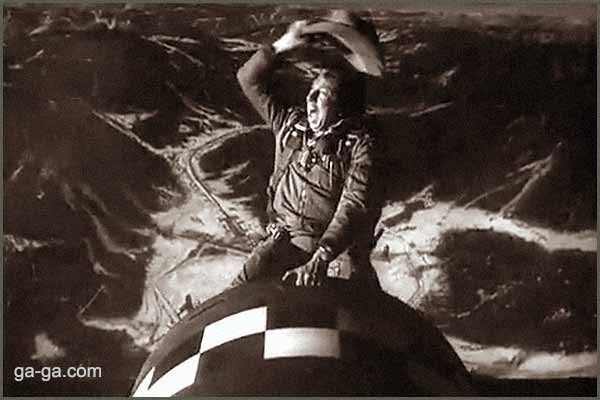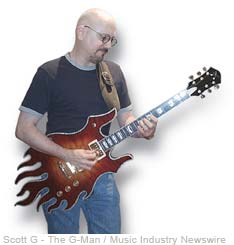July 4th Music: Surprising Secrets of Patriotic Songs
Whether played by marching band, orchestra, or rock group, there are patriotic tunes that everyone in America finds familiar, exciting and uplifting. Scott G reveals some of the eyebrow-raising facts about the top 14 crowd-rousing anthems.

Your celebration of Independence Day may include watching fireworks, having a barbeque, or tuning in one of the TV marathons, but chances are you will also hear some patriotic music during the holiday.
 These familiar tunes are exciting and uplifting, but how much do you know about how they were created or the people who wrote them? There are some surprising facts behind all of this glorious music.
These familiar tunes are exciting and uplifting, but how much do you know about how they were created or the people who wrote them? There are some surprising facts behind all of this glorious music.
So, fire up the outdoor grill, look up at the pyrotechnics, and strike up the band as we reveal the secrets behind the most influential nationalistic musical moments of all time.
“Star Spangled Banner,” Francis Scott Key, 1814.
Schoolchildren in America all learn how Key watched the British bombardment of Fort McHenry during the War of 1812 and so admired the courage of the beleaguered American forces that he wrote four stanzas of “The Star Spangled Banner” (only the first is usually performed). Key based the melody on an English drinking song called “To Anacreon in Heaven.” The song has only been the national anthem since 1931, and there was a strong movement to replace it with one of the other songs on this list.
“America (My Country ‘Tis of Thee),” Samuel F. Smith, 1832.
The music was composed in the 1700s, sometimes attributed to Henry Cary. First popular in Great Britain as “God Save the King (Queen),” the song became bi-continental in 1832. Modern audiences have been greatly moved by the R&B version by Ray Charles, a truly wonderful blending of emotion with what musicians call “the groove.”
“Rally ‘Round the Flag,” George F. Root, 1862.
Written for the Union army and its supporters during the Civil War, the song was hugely popular in the North. This didn’t prevent Confederate troops from writing their own lyrics and singing the song throughout the South.
“When Johnny Comes Marching Home,” Louis Lambert, c. 1863.
Lambert was a pseudonym for Union Army Bandmaster Patrick S. Gilmore. His lyrics, set to an old Irish folk song, were popular through the whole Reconstruction Era (1865-1896). It appears in an extended instrumental version on the soundtrack of Stanley Kubrick’s film “Dr. Strangelove.”
VIDEO: “Riding the Bomb” in “Dr. Strangelove”:
“Battle Hymn of the Republic,” Julia W. Howe, 1861.
Howe is another lyricist who succeeded by utilizing a pre-existing piece of music, in this case a camp meeting tune of the 19th century (which also became “John Brown’s Body”). The profound power of the words combined with the compelling melody cannot be denied, and it was sung at the funerals of Winston Churchill, Robert Kennedy, and Ronald Reagan.
“Overture: 1812,” Pyotr Il’yich Tchaikovsky, 1880.
Patriotic music doesn’t always revolve around the July 4th celebration, or even refer to the USA. Tchaikovsky got Russian hearts a-pounding with his “1812 Overture in E Flat Major Op. 49,” written to celebrate the 70th anniversary of his country’s victory battle during the Napoleonic Wars.
“Semper Fidelis,” John Philip Sousa, 1889.
Popular ever since it was first performed, the effective and spirited tune takes its name from the U.S. Marine Corps motto meaning “always faithful” and is dedicated to the Marines.
“America the Beautiful,” Katharine Lee Bates, 1895, 1904, 1913.
Originally a poem that Bates twice revised after its first publication in 1885, “America the Beautiful” was sung to several different melodies. The song associated with it today is “Materna,” composed by Samuel A. Ward in 1882, but it was also often performed to the tune of “Auld Lang Syne.”
“Stars and Stripes Forever,” John Philip Sousa, 1896.
Composed on Christmas Day, “The Stars and Stripes Forever” has become the country’s official march (US Code, Title 36 Chapter 10). Sousa wrote lyrics to the song, but they are little known today (sample: “Let martial note in triumph float / And liberty extend its mighty hand / A flag appears ‘mid thunderous cheers, / The banner of the Western land.)”
“Yankee Doodle Boy,” George M. Cohan, 1904.
“You’re A Grand Old Flag,” George M. Cohan, 1906.
“Over There,” George M. Cohan, 1917.
Known as “the man who owned Broadway,” Cohan was a superstar before the term was coined. While his film biography is called “Yankee Doodle Dandy,” the title of his first big tribute to America is actually “The Yankee Doodle Boy.” Cohan excited U.S. audiences again in 1906 with “You’re a Grand Old Flag,” although the original line was “You’re a Grand Old Rag.” It was America’s entrance into World War I in 1917 that inspired Cohan to write “Over There,” for which he received a congressional medal.
“God Bless America,” Irving Berlin, 1938.
The prolific Berlin (900+ songs despite being unable to read music) originally wrote this song right after the first World War, but did not complete it until just before World War II. Kate Smith first performed it during her radio show on Armistice Day, 1938. An immediate sensation, the song was often suggested to replace the “Star Spangled Banner” as the national anthem.
“Star Spangled Banner,” Jimi Hendrix, 1969.
The legendary guitarist took the stage near dawn on the final day of the Woodstock Music and Art Fair. The 13th song in his hour-long set was an incendiary rendition of the venerable tune. In a performance that was somehow savage and grand at the same time, Hendrix wrestled new levels of emotion from the song and generations have never heard it quite the same way again.
“Apocalypse Now,” Francis Ford Coppola, 1979.
The music in question is “Ride of the Valkyries,” from Richard Wagner’s opera, “Die Walkure” (1854-56). The composition fit perfectly into director Coppola’s nightmarish vision of the Vietnam War. The sequence, featuring a helicopter attack at dawn, never fails to raise the emotions of viewers.
VIDEO – Ride of the Valkyries – Apocalypse Now (3/8) Movie CLIP (1979) HD:
Article is Copr. © 2007 by John Scott G and originally published on MusicIndustryNewswire.com before finding its permanent home here on Ga-Ga.com – all commercial and reprint rights reserved.



Jun 1, 2013 @ 6:35 PM PDT
Probably the most annoying use of “When Johnny Comes Marching Home” was in the “Die Hard With a Vengeance” movie, where instead of an original rousing score or theme element, they re-use the ‘Johnny’ theme over and over *AND OVER* … AND OVER to the point I find the movie hard to watch because the same jaunty tune repeats endlessly (HEY! new drinking game …). It’s like the filmmakers couldn’t afford a good soundtrack guy after paying Bruce Willis the big bucks. To this day, I still find that movie fun, but the use of the same “theme” throughout is freakin’ annoying as hell.
Jul 3, 2013 @ 4:41 PM PDT
actually … I just rewatched the ‘Die Hard with a Vengeance’ movie, and it wasn’t as annoying as I remember it being (the tune), perhaps due to the Blu-ray remastering or remix of the soundtrack, I no longer dislike ‘Johnny’ 🙂